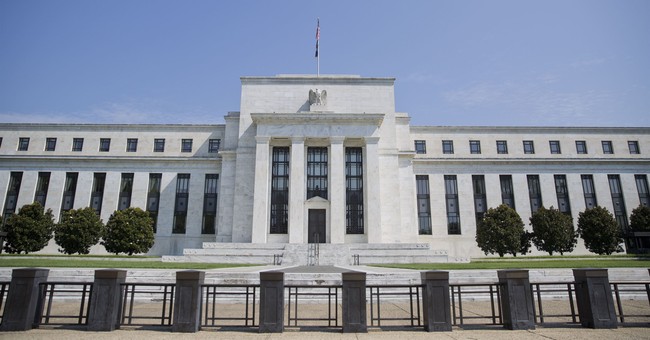
Source: AP Photo/Pablo Martinez Monsivais
With the historic collapse of oil prices and glutted tankers sloshing around off the coast of Los Angeles, some forecasters are predicting deflation as far as they can see. They tend to believe that shocks to supplies cause inflation or deflation in commodities that spreads through the economy like a virus.
Others look to the Fed gorging itself on anything that resembles financial paper and predict hyperinflation like that of Germany a century ago or Zimbabwe recently. Historically, growth in the Fed’s balance sheet signaled a rapidly expanding supply of money that would ignite inflation. So which will it be: inflation, deflation, or stagnation?
I look for deflation for several reasons. First, Japan has demonstrated for 30 years that near-zero interest rates, massive government borrowing, and growth in the money supply doesn’t generate growth or inflation. Europe has imitated Japan for a decade. So have they proven the quantity theory of money to be wrong? The equation of exchange and its variations have driven monetary theory for over a century. The equation is MV=PQ where M = money, V = velocity, P = prices and Q = quantities. P*Q is just GDP. Velocity is the same as turnover in accounting. Money “turns over,” or gets spent multiple times, until it equals GDP. So, if V remains constant while M grows, P will rise and price inflation will happen until Q catches up.
So, what happened in Japan and Europe to break the link between money and prices? Ludwig von Mises, the greatest economist of the 20th century, answered in his classic Human Action that nothing had broken; economists took the equation mechanically instead of seeing it as a general expression of human behavior:
An outgrowth of this erroneous point of view was the idea that there prevails a proportionality in the changes of the-total-quantity of money and of money prices.
The quantity of money available in the whole market system cannot increase or decrease otherwise than by first increasing or decreasing the cash holdings of certain individual members…
Money is neither an abstract numeraire nor a standard of value or prices. It is necessarily an economic good and as such it is valued and appraised on its own merits, i.e., the services which a man expects from holding cash…Only because people expect changes about the kind and extent of which they have no certain knowledge whatsoever, do they keep money."
In other words, people respond to increases in the money supply in different ways depending on their circumstances. People cling to money only because they can’t see into the future perfectly. Money acts as a cushion for unexpected expenses. When people face a more uncertain future, they hold more money than if the economy has been calm for a while and the future looks promising.
That’s what makes velocity important. It’s not constant but has been declining for decades as the chart from the Fed shows.

Velocity peaked at the end of the stagflation of the 1970s after Chairman Paul Volcker raised interest rates to historic heights to combat inflation. Velocity measures the willingness of individuals and businesses to hang on to cash. During periods of high inflation people didn’t hold money because it lost value every day, so they spent it quickly and velocity rose. As inflation subsided, people were more willing to hold onto it.
So, low inflation is one cause of falling velocity. Another is low interest rates. When interest rates are high, the opportunity cost of holding cash is much higher because people could invest it in treasury notes or bonds, corporate bonds, or the stock market and earn a good return. That’s why the Fed’s unending low interest rates have caused it to score several own goals like “Wrong Way” Roy Riegels or Jim Marshall. The more the Fed reduces interest rates, the more cash people are willing to hold and thereby thwart the Fed’s efforts to ignite inflation.
Another way the Fed works against its own policies is through the interest it pays banks on excess reserves. The Fed began that policy during the Great Recession of '08. Before then, reserves beyond those required by Fed policy sat idle, so banks preferred to lend them and earn something. Then the Fed set the interest it pays on excess reserves above the short-term rate that government notes earn. The punishment of near zero interest rates combined with the incentive to earn above market rates on reserves persuaded banks to sit on their cash and cut back on lending to businesses.
Confusion, low interest rates, and the Fed policy of paying interest on excess reserves all work against the resuscitation of inflation.
No comments:
Post a Comment